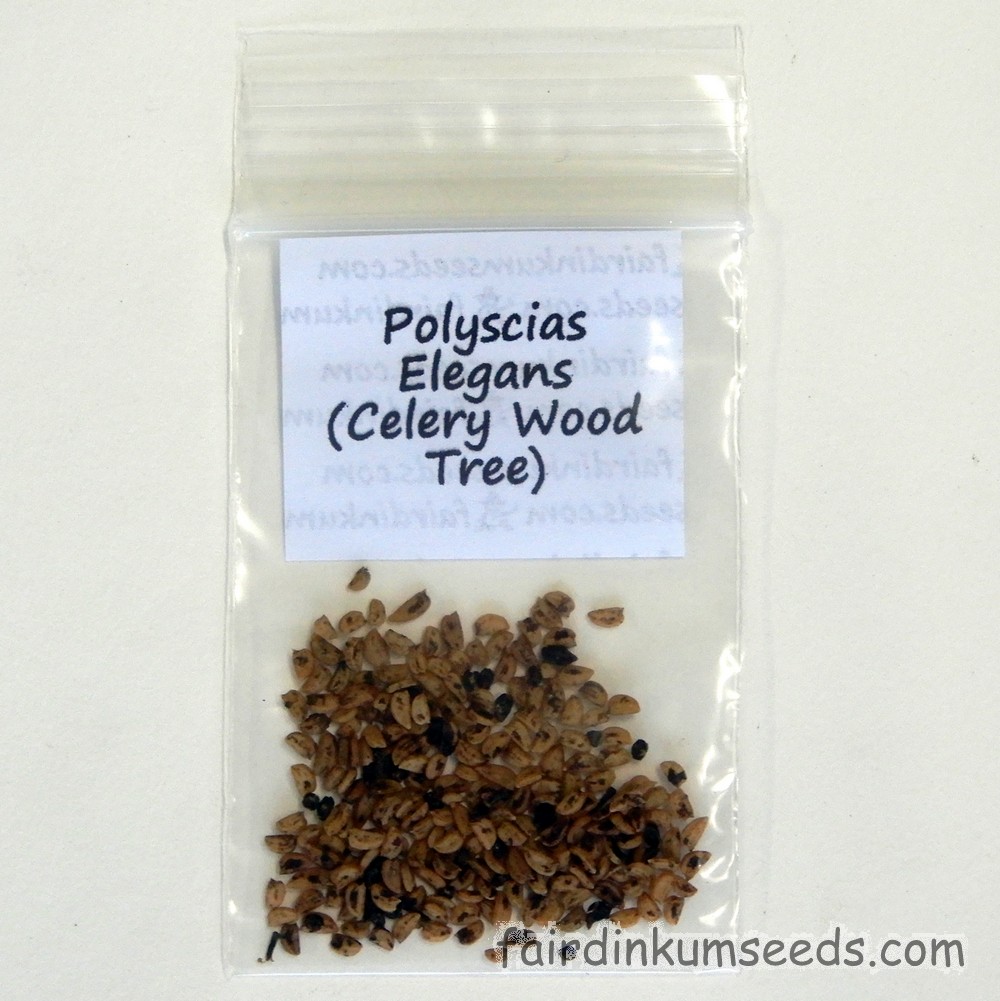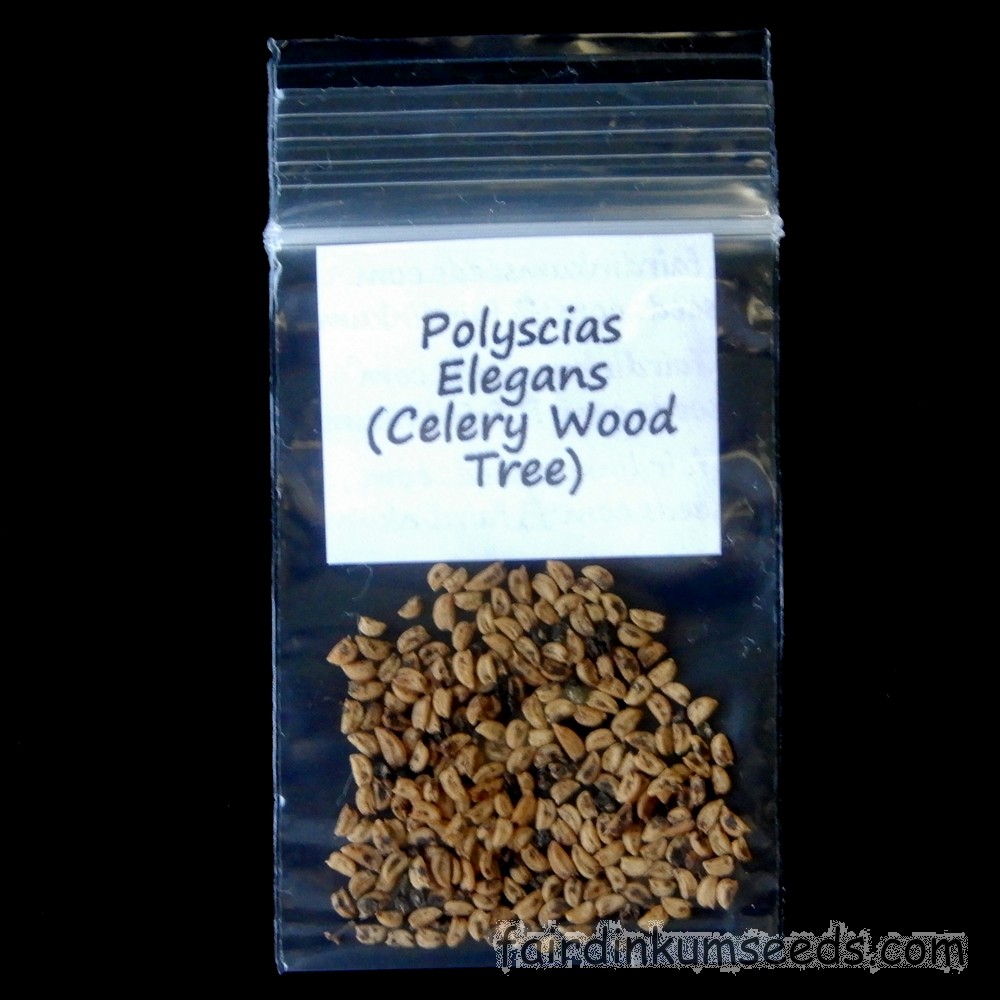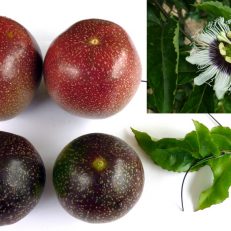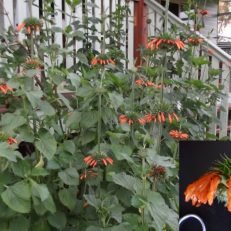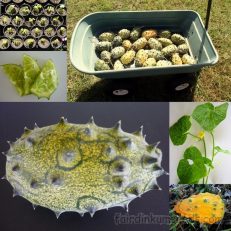Please read text!
Polyscias Elegans Celery Wood Seeds
Packet of 100+ fermented and dried, less than 6month old seeds!
This fast growing pioneer species is great for attracting the local wildlife.
It grows super quickly and provides heaps of habitat for the critters.
It also produces lots of flowers for the bees and birds.
After it finishes flowering it pumps out huge bunches of soft black fruit that the birds love.
If you link your fingers together and make a circle with your arms, that is about how big the biggest bunches are, with the smallest being around basketball sized.
The plant itself reminds me a lot of Elderberry, except it’s native, plus it’s bigger and denser at a much younger age.
As the name suggests the plant smells strongly of Celery when crushed and though it smells delicious and looks like it might be an edible species, and it does have edible and delicious relatives, I just can’t find any evidence to back that hunch up…
There are a few relatives in Asia that I’ve eaten before and they were awesome, but this Aussie one has never been used as a food as far as I can tell, and it might even have toxic components I’m not aware off?(Please contact me if you have any information about toxicity or experience using it as a food!)
So yeah, based on the limited knowledge I have, this fella is NOT a safe food or a bushtucker species.
It’s just a native reveg that looks cool, smells nice and provides a heap of fruit and flowers for the critters.
To that end it’s a great choice and its super popular in the revegetation and Landcare groups.
The only issue has always been seed germination.
It can be erratic…
Other folks who collect their own seeds either say they grow like a weed and they always end up with too many, or they can’t get them to germinate at all and consistently fail.
When cleaned dried and later planted like you would any other species, this fella is often doing bugger all many months later, long after all the other species have been germinated and moved out.
This makes folks think the seeds are just old, and that fresher seeds are needed.
The thing is, even picked, cleaned, and planted on the same day it sometimes has poor germination.
In actual fact it isn’t old seeds that are the main issue and you can see that clearly from the fact the birds spread it around so easily.
It’s just dormancy and it has a bit of a low germination rate in general.
The plants are designed to get carried by the birds or the wind and rain to a new area, and then WAIT for ideal conditions.
If they sprouted straight away, they would die before they had a chance to be buried in the soil and covered for next lot of rains.
The fruit has germinating inhibitors that prevent the seeds from sprouting.
By the time these are leached out, broken down, and washed away by either digestion or weathering by the rain, the seed is normally covered and in a nice little moist patch, ideal conditions to germinate.
At that stage all it needs is a trigger and the majority will come up.
I have done a heap of experiments with this fella over half a dozen years now and I can tell you what I have experienced, but please be aware your own experiences in your own location, with your own unique climatic and soil conditions, may produce a completely different set of results.
You might have a much better result than me, but you may also fail completely, many people do.
Consider that before you decide to purchase.
Fresh whole fruit planted in sandy soil.
2% germination about 1.5-2years after planting.
Fresh seeds washed and rubbed to remove the fruit and planted while still fresh, not dried.
5% germination within a year.
Seeds washed and rubbed to remove from fruit, then sun dried and planted a week later.
5% germination within a year.
Seeds removed from fermented fruit and planted while still fresh.
5% germination within a 6months.
Seeds removed from fermented fruit and dried for several months, then later planted.
15% germination within 6months.
This is how I will be sending the seeds.
They have been fermented for several days in aerated water in water to remove from the fruit, washed very well, then thoroughly dried for a month or more, and that picture up the top is exactly what you will be receiving.
They are less than 6months old, but always more than a month, and in my experiments this produced a very standard result of ~15% which is about~15ish plants per packet within 6months.
That’s good enough to be great value I reckon, but I wanted to go better if possible so over the next couple years I tried a few more different things too.
Smoke treatment normally works great, but both seeds soaked in it at various concentrations, or when just when sprinkled on top of the soil I ended up with 0% germination after 2 years.
Total failure, every time, much to my surprise.
GA3 is awesome stuff, but the concentration is super important.
In very high concentrations of 2000ppm, 1500ppm, 1000ppm, all were 0% over 2 years too.
Total failures as well.
BUT, GA3 soak at 500ppm for 24hrs before planting, using my fermented then dried seeds produced 25% germination within 1 month.
The fastest and highest germination rate for all treatments I tried and well worth a thought.
I suspect tinkering with that GA3 percentage a little could even get a better result, maybe a little lower concentration even, but I didn’t bother testing the theory.
It seems to me that no matter what I do I always get a few plants, and with my fermented and dried seeds just planted as is I get around 15 plants per packet within half a year.
You should get around the same, but I say again, these guys should be considered a gamble and you may not get any. You may fail, this species can be tricky.
If you can’t afford to gamble just keep your $ in your pocket.
Every mature plant produces tens of thousands of seeds so you really only need a few to get you started.
Botanical synonums include Nothopanax elegans, Tieghemopanax elegans, Gelibia elegans, Panax elegans, Gelibia branderhorstii, Polyscias branderhorstii, and they are also commonly called silver basswood, black pencil cedar, cedar, black pencil, celery wood, celerywood, parsley tree, parsley wood, mowbulan whitewood, and white sycamore.
Wildharvested and home grown by me and the Mrs, no chems, no nasties, no problems!!!

